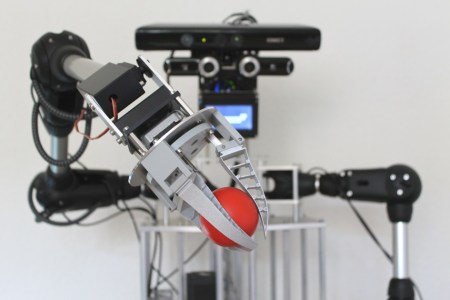[Malte Ahlers] from Germany, After having completed a PhD in neurobiology, decided to build a human sized humanoid robot torso. [Malte] has an interest in robotics and wanted to show case some of his skills.The project is still in its early development but as you will see in the video he has achieved a nice build so far.
A1 consists of a Human sized torso with two arms, each with five (or six, including the gripper) axes of rotation, which have been based on the robolink joints from German company igus.de. The joints are tendon driven by stepper motors with a planetary gear head attached. Using an experimental controller which he has built, [Malte] can monitor the position of the axis by monitoring the encoders embedded in the joints.
The A1 torso features a head with two degrees of freedom, which is equipped with a Microsoft Kinect sensor and two Logitech QuickCam Pro 9000 cameras. With this functionality the head can spatially ”see” and ”hear”. The head also has speakers for voice output, which can be accompanied by an animated gesture on the LCD screen lip movements for example. The hands feature a simple gripping tool based on FESTO FinGripper finger to allow the picking up of misc items.











